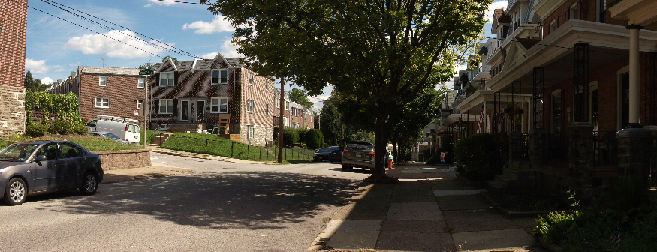I spent most of the day today (technically yesterday) at the Council meeting discussing the large signage bill on Market East.
I am in support of this bill because (a) legalizing any and all funding sources should provide stronger development financing and leveraging, (b) the outside of the Gallery looks like crap, and (c) it's in keeping with Market East's historic character.
Which is why I find the "historic" argument by the opposition so ironic and hilarious. Each opposition group repeats the same claim: Market East is a historic district. It is not. It is a smattering of historic buildings (Lits, Strawbridge's, Wanamakers, Reading Terminal, PSFS, etc.) in a fabric largely rebuilt between 1950 and 1980. The (lack of) density of the historic buildings doesn't merit historic district consideration. And furthermore, since so many of these buildings were built with retail in mind, they sported large signs from the very beginning. Robbing them of their signs robs them of their real historic nature and creates a false history, one in keeping with a mentality that the only things in Philadelphia worth keeping were built before 1800.
Market East's history is one of a retail and commercial heart of a city. It is like Boston's Downtown Crossing, New York's Herald Square, Toronto's Dundas Square, San Francisco's Union Square, Chicago's Historic Loop, Minneapolis' Nicollet Mall, London's Piccadilly Circus and Regent Street, and hundreds of other examples globally. Such centers have always been populated as signs as big and fancy as then-current technology allowed. To say otherwise countermands their history.
It is thus unsurprising that the most satisfying intersections on Market East are at 12th and 13th (especially when 1234 had that Dunkin' Donuts billboard in). This is because they are activated, and part of their activation is their signage. The Hard Rock guitar, an incised Marriot sign, the signs for Sole Food and Loews Hotel, the Convention Center, Macy's' display windows...all of this results in the skeleton of some reasonably lively corners. By Market East standards, they're positively tripping.
We must not distract from pedestrian amenities (or their lack thereof). But most the historic assets of Market East have been redeveloped, and further redevelopment needs to happen now on the multitude of underutilized properties (650 Market, the Disney Hole, 910-50 Market, 1000 and 1100 blocks of Market, 1301 Market...) that surround and besiege the historic properties. And to do that as many funding sources as possible must be tapped. Philadelphia's sign ordinance is, when enforced, among the most restrictive in the country. Maybe it's time to concede that, in Market East's case, it's too restrictive, and needs to be relaxed.

This comment has been removed by the author.
ReplyDeleteThere are so many ways to increase revenue in Philadelphia and billboards are quite possibly the lamest one. I live 4 blocks from Reading Terminal and it's a great multi-purpose neighborhood -- these billboards will turn it in to an entertainment zone. The truth is that East of Broad has come back because of increased residential development -- not tourism. Also, I happen to think that the Gallery is so retro it's kind of cool looking. I also shop at Kmart there. There are more creative ways of improving the Gallery's cache -- get independent vendors, get a shopping campaign, etc. Billboards aren't the answer!
ReplyDeleteDiana, let me direct you to the photos here. Notice one (of the many) aspect(s) these photos all have in common: the buildings all have gigantic billboards!
ReplyDeleteSo having billboards is kind of the historic state of Market East. Hence my preservationist attitude is that excluding them actually creates a kind of false "history"--one the preservationist groups have fallen for. Billboards aren't the whole answer, but they are part of the answer.